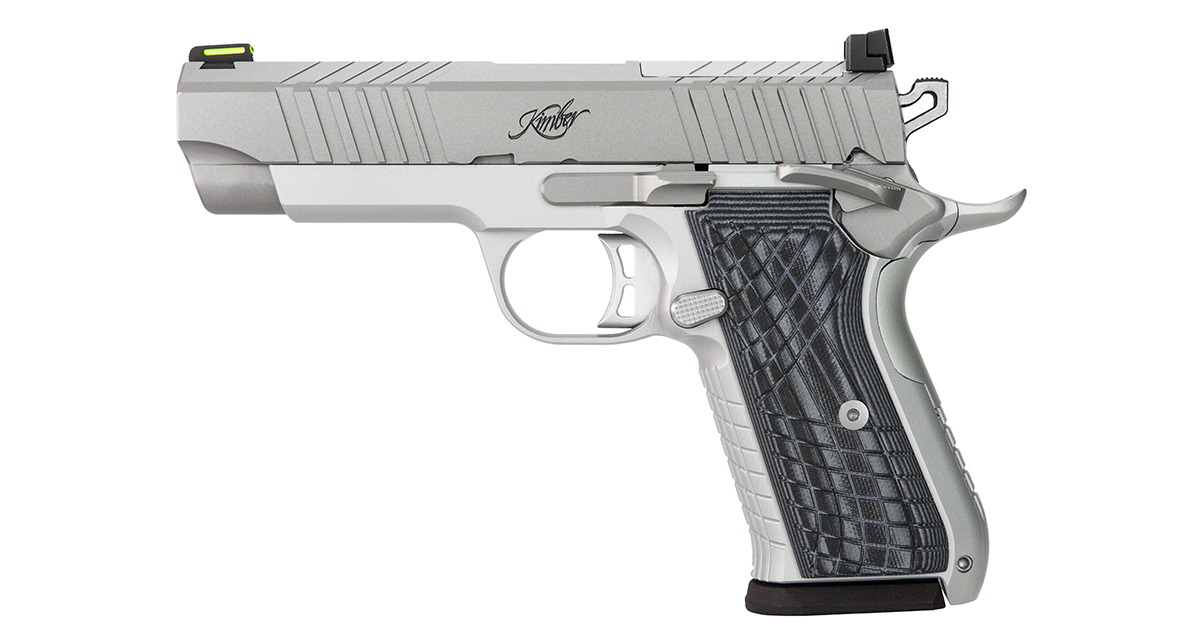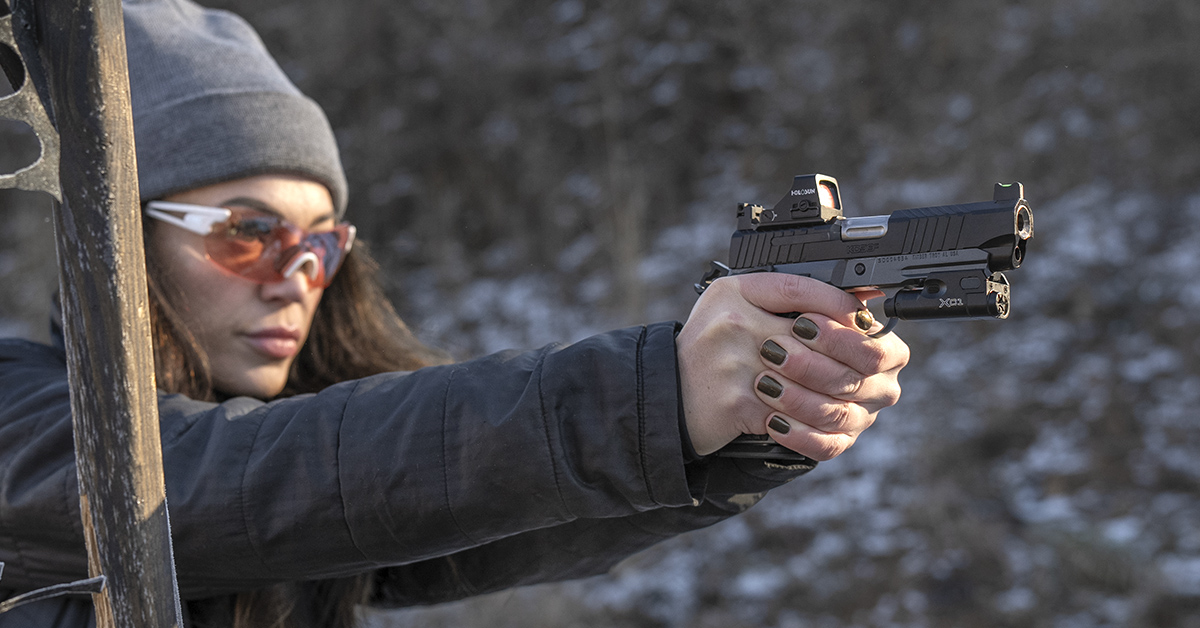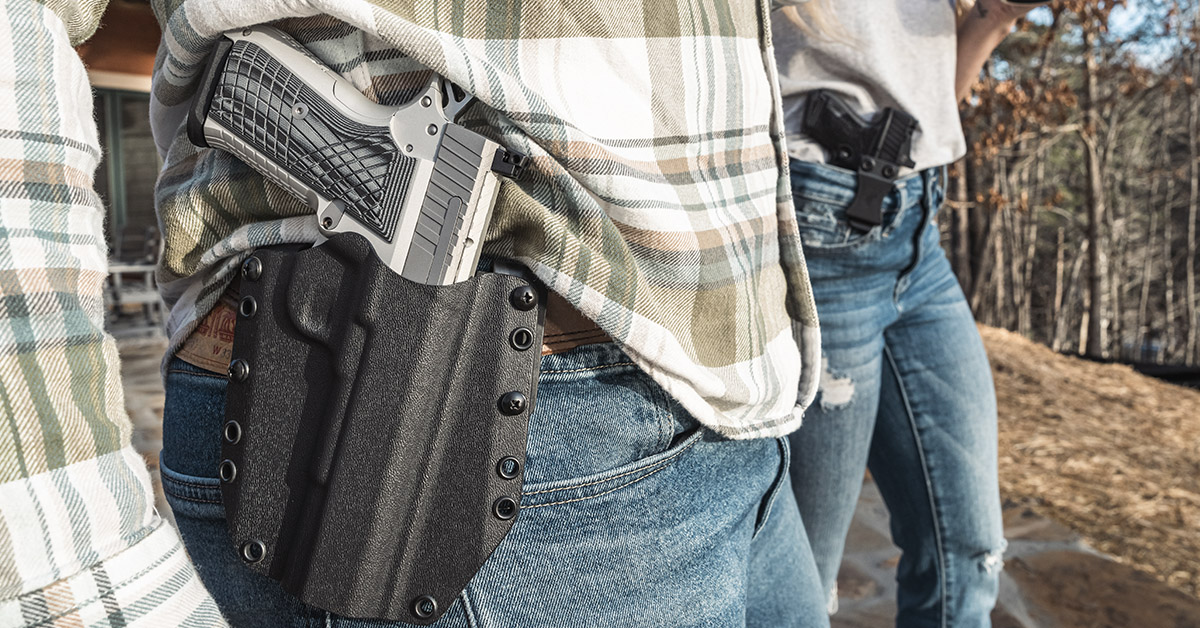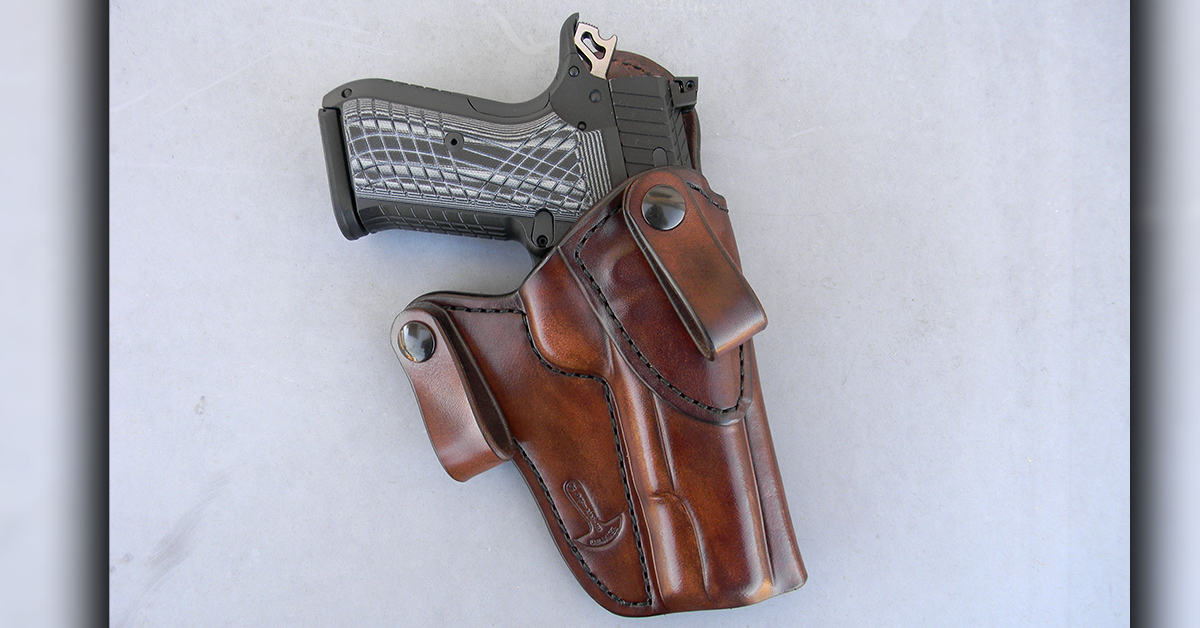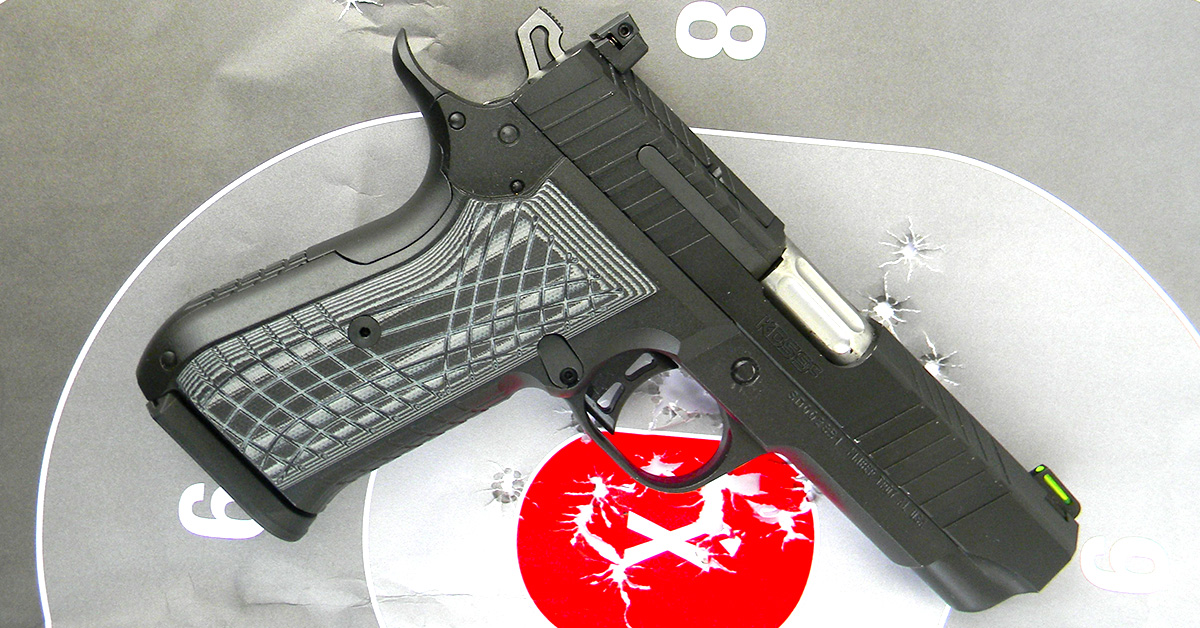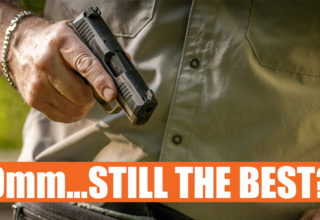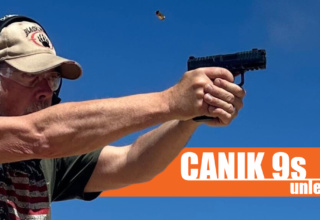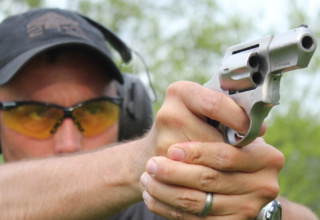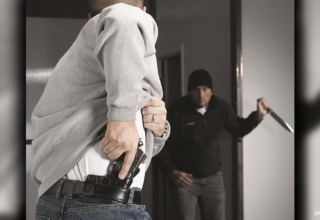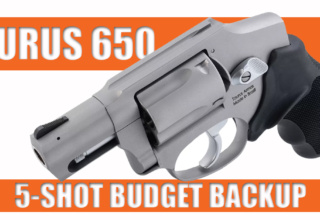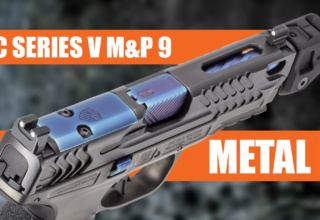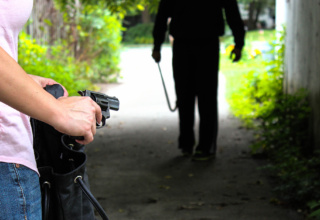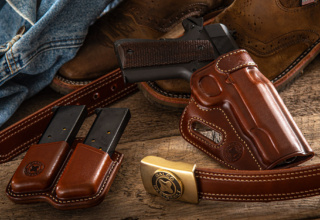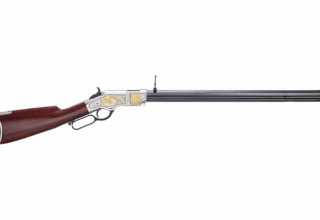Generously accurate, quick to engage, and sized to carry, the Kimber KDS9C is one 1911-style 9mm that delivers personal defense performance with style
by Bob Campbell
I have owned 1911 handguns for decades. Just the same, I am never too old or set in my ways to greet new introductions with an open mind. I cannot say time has always been kind to the 1911, as a number of terribly cheap 1911 manufacturers have sullied the 1911 reputation. At the same time, there are 1911 handguns in production that are superior to anything available at any other point in time.
A trend I have seen in the past few years is a greater number of 9mm 1911 handguns. Some, like the Dan Wesson Valkyrie, are standard 1911 types. Others are modified to a high-capacity grip frame, such as the pistol presented here. Some are manufactured without a grip safety.
While traditionalists will point out that the 1911 was originally a .45 ACP, it was also a full-size steel frame handgun. The original Commander, developed by Colt immediately after World War Two, featured a barrel length cut by ¾ inches and a correspondingly short slide, and it also incorporated an aluminum alloy frame into the design. This pistol was chambered in 9mm Luger. When a military contract was not forthcoming, Colt introduced the Commander to the civilian market in 9mm and .45 ACP.
The 9mm Commander has a firm place in history.
Kimber’s KDS9C is a wonderful mix of traditional and modern design. While the 1911 is sometimes called Old Ugly or Old Slabsides, aesthetic intuition is represented in the KDS9C. This is an attractive pistol.
After having written three books on the 1911, I have no challenge in examining a handgun. The KDS9C is a true 1911 type and may rightly be called a modified Commander. There is no grip safety. Since the handle accommodates a high-capacity magazine, there was a need for less complication in design and manufacture. Frankly, after handling this pistol, you will not find a Browning Hi-Power variant quite so attractive or fast handling. Sure, you may own both, but the straight-to-the-rear trigger compression of the KDS9C is superior to the best Hi-Power trigger. The slide lock safety is similarly superior to any other single high-capacity 9mm. The Hi-Power cannot compete with this piece. The fifteen-round magazine is made of steel , is well-constructed, and is reliable. It isn’t difficult to load to full capacity.
Kimber makes good pistols that are affordable as well as more expensive pieces. Is the KDS9C the magnum opus of 9mm 1911s? Don’t say “No” until you handle one.
The pistol is well balanced. It is a little under the usual 30-oz. unloaded weight of a Commander 1911, but only by a fraction. The grip frame is slightly wider than the typical 1911. Maintaining a slim profile is aided by well-designed G10 grips. The trigger action and slide lock safety are pure 1911.
Let’s look at the design and execution of the pistol.
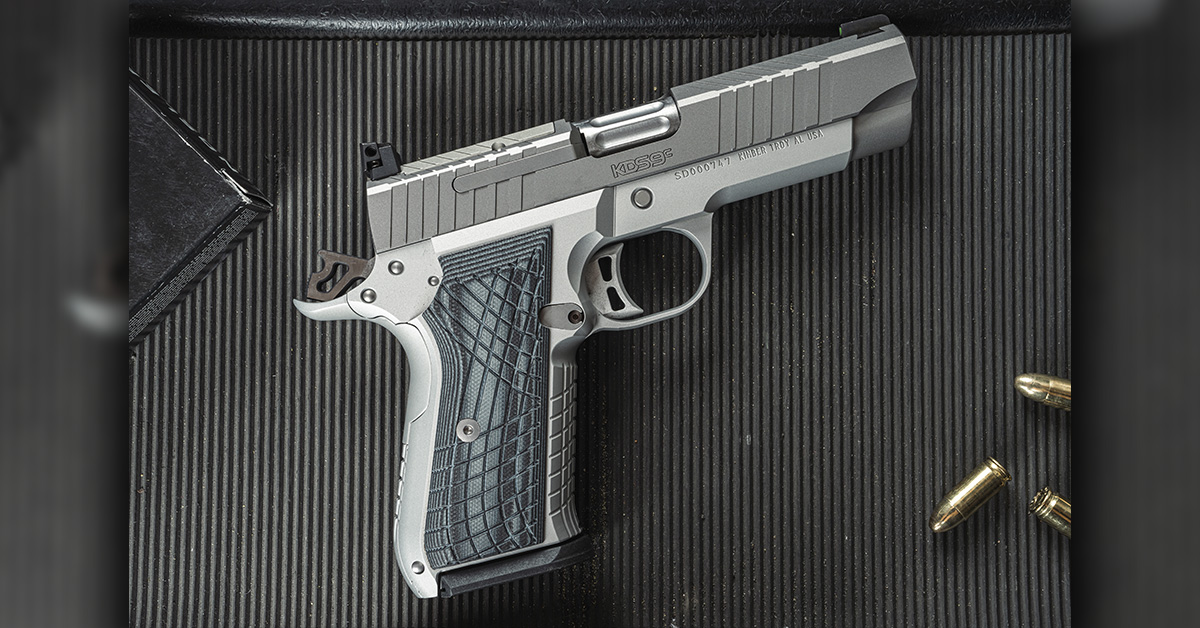
The slide is a Commander length, but shorter by .16 inches than most Commanders. In this way, it is more like the bushingless-lockup Pro Carry. The barrel is a belled design with bushingless lockup, common in modern 1911 manufacture. A ramped feedway results in a supported chamber superior in strength to most polymer frame pistols. It is good to have case head support, as enthusiastic handloaders will attest. The barrel features a swinging link in typical 1911 fashion. Disassembly is simple enough. Be certain the handgun is unloaded. Remove the magazine. Press the slide to the rear far enough to bump out the slide lock. The slide will run forward off the frame. Remove the recoil spring and guide and then the recoil spring plug. The barrel — and it is a snug fit — slides out the front of the slide. This 4.09-inch barrel is nicely finished and features flutes that provide a distinctive appearance. The steel hammer is a skeletonized type while the trigger is slotted aluminum. The slide features nicely done cocking serrations both forward and rear.
That human software is adaptive is encouraging, but the built-in interface from so many years of handling the 1911 came into play when handling this pistol. I immediately fell into the groove despite the past half-dozen pistols I have tested being striker-fired types. Things that have been around a long time tend to stay around. By extension, the Model 1911 has been around for more than one hundred and twelve years and should be around at least another hundred. I cannot say that for any other viable combat handgun. This success rate is far from trivial. The 1911 fits most hands well. Large or small hands, short or long fingers, strong or weak hands, the 1911 compliments the coin toss nature gave us.
The KDS9C is designed primarily for personal defense. Get your mental spotlight focused on this. A defensive handgun must be reliable and fast for an accurate first shot. If I have learned anything from my studies, it is that an accurate first shot, and the first two or three shots fired, decide the outcome. Time is a great teacher that eventually kills all its pupils. The goal is to beat the odds. A quality handgun you have mastered provides an edge.
The pistol disassembles easily enough so maintenance is not a problem. Magazines are available, if a bit pricey, but you have bought into a pricey gun. The sights are excellent, with a fiber optic front and serrated rear. I did not explore the optics-ready features. You must order a plate from Kimber for the red dot of choice, and this is costly, too, since it isn’t included in the purchase. I like the external extractor. The original 1911 internal extractor is long lived when properly manufactured of tool steel. The external extractor gives no trouble and seems functional in a wide number of applications.
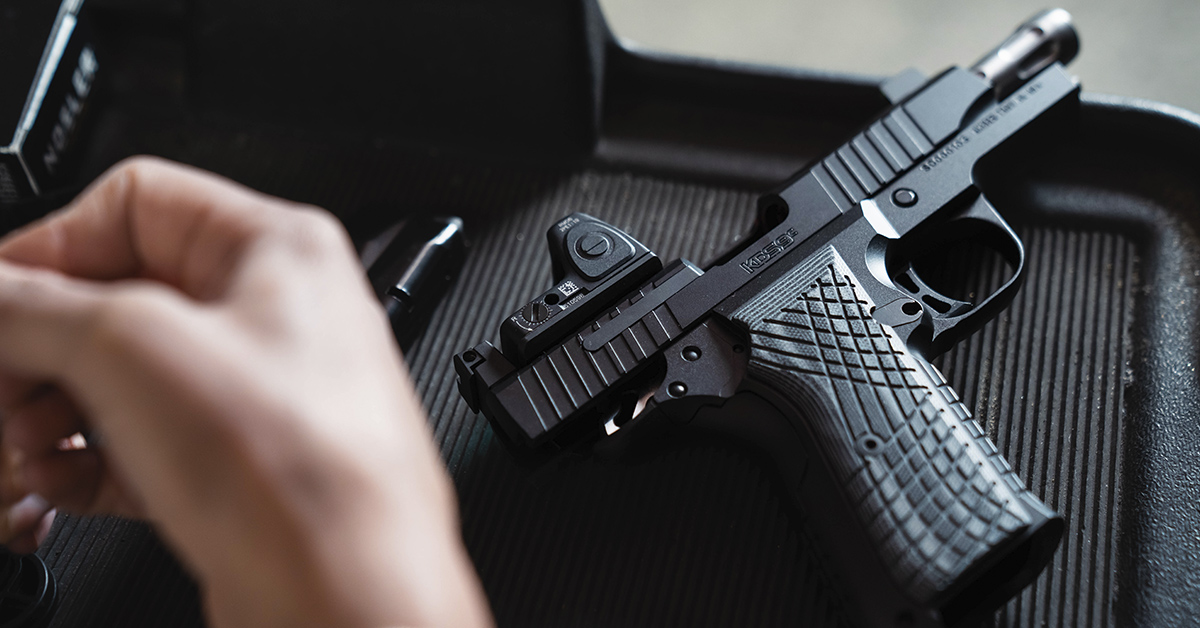
I dry-fired the piece a few hundred repetitions. I consider dry fire the cornerstone of marksmanship. I also ran several dry runs with dummy ammunition. A tapered magazine slipping quickly into a generous magazine well with a modest magazine guide is fast — very fast — and sure. If you get into a hole and need to reload quickly, the Kimber accommodates. The magazine release is a departure from the 1911, yet I found it fast and positive in operation.
Overall, this is a nice package.
I compared the Kimber’s dimensions to a couple of favorite 1911 handguns. The Dan Wesson Valkyrie is an aluminum frame Commander in 9mm with a 9-round magazine. The Springfield TRP is a steel frame Government Model .45 that is slightly heavier than some. The main concern was in the grip profile.
Kimber (K) / Dan Wesson Valkyrie (DW) / Springfield TRP (SPR)
Grip Circumference
- (K) 5 ¾ in. / (DW) 5 3/8 in. / (SPR) 5.55 in.
Width
- (K) 1 3/8 in. / (DW) 1 1 /8 in. / (SPR) 1 ¼ in.
Weight (unloaded)
- (K) 28.0 oz. / (DW) 30.5 oz. / (SPR) 42.0 oz.
If you can handle a 1911 or a Hi-Power, the KDS9C profile isn’t a problem. I am not quite certain how Kimber managed to design a 15-round magazine into a Commander 9mm and have it come out lighter than most single-column magazine pistols. My actual measured weight is a bit more than the advertised 25.3 ounces specified by Kimber. Still, it is quite light — lighter than many polymer guns, and thinner as well.
Firing Tests
The single most important component of a personal defense pistol is reliability. This pistol has fed, chambered, fired, and ejected just over 500 cartridges without a single failure of any type. Bullet weights ranged from 90 to 150 grains. The 17-pound recoil spring seems properly set up and the ramped feed ramp certainly didn’t present a difficulty.
I tested quite a few cheap loads. There isn’t a great deal of difference in the current price between these loads and a quality accurate loading from Fiocchi. Nevertheless, shortages are inevitable, so we need a firearm that feeds all loads. The KDS9C does that.
Recoil is modest, as may be expected with a pistol weighing over 30 ounces loaded and firing the 9mm Luger cartridge. I drew and fired quickly at 5, 7, and 10 yards, getting on target and blowing out the X ring.
Several things factor into good shooting. A good heft and balance, grip shape, and bore axis influence the pistol’s accuracy potential. I have learned that stopping recoil isn’t practical, but recoil control is. Keep a firm grip when firing but realize that a crush grip, sometimes called a death grip, may limit trigger finger flexibility and how well the thumb controls the slide lock during reloads.
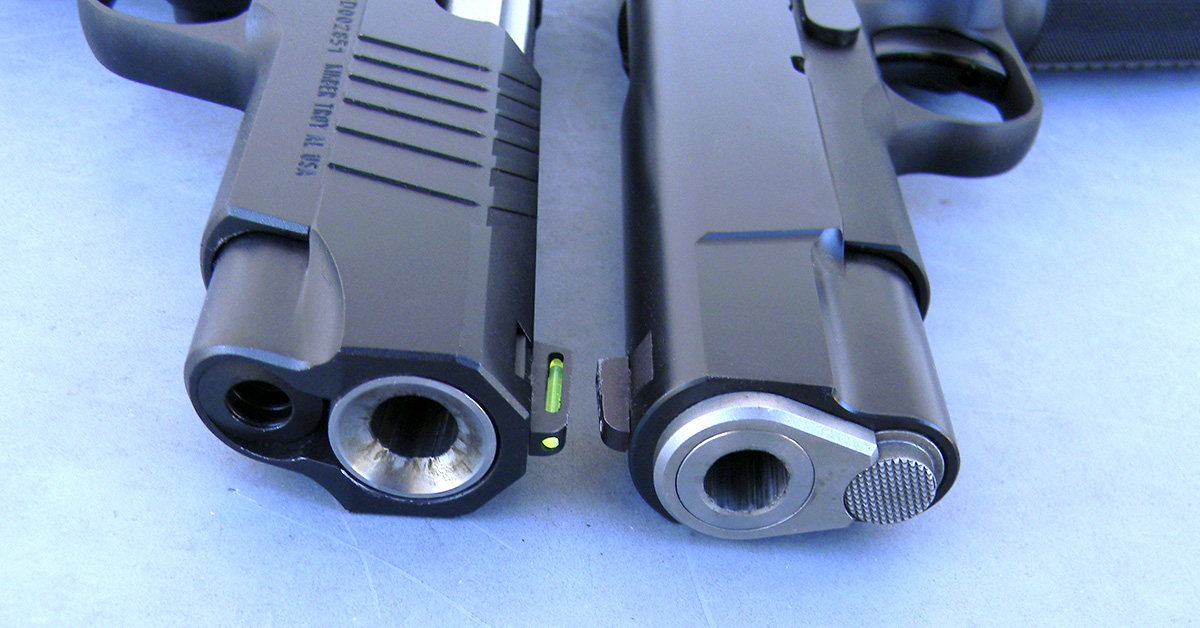
The 1911 always meets my hand in just the proper grip and gets on target quickly. As I fired the KDS9C, I was aware of a progressively finer distinction between this and other Kimber pistols. This pistol shoots well and shoots better than most any other 9mm of a similar size. While I cannot shoot as well as some of the competition shooters I admire, I do know that their superior performance is well within the limits of human capabilities. Shooting up to the gun is a challenge. You will be as well armed as possible with the KDS9C. Remember…skill is enduring while luck is transient.
I stretched the firing test to 15 and 25 yards during the evaluation, using Fiocchi’s Range Dynamics FMJ load for most of my work. It wasn’t difficult to perform head shots at longer range. Not rapid fire, but in timed fire and in a respectable cadence. I did not always ring the bell on the brow or bridge of the nose, but I stayed in the drop ’em zone at 25 yards. That is excellent performance by any standard.

I also fired the pistol from a solid benchrest as a final test. While this type of firing doesn’t have much to do with self-defense (although it may), I would rather carry a combination capable of a tight group than a poor group. Frangible ammunition is usually not very accurate. All-copper loads may be accurate but sometimes aren’t. Be certain the pistol and ammo are accurate enough for the task at hand. I fired four loads for accuracy at 25 yards and am satisfied that the Kimber is plenty precise for any defensive chore.
25-yards, 5-shot groups / two-group average
- Fiocchi 115-grain FMJ / 2.4 inch
- Fiocchi 115-grain Defense / 2.0 inch
- Fiocchi 124-grain Defense / 2.2 inch
- Fiocchi 147-grain Defense / 1.75 inch
We must debate the 9mm versus the .45 ACP since this is a 1911 and not a .45. Modern 9mm loads are powerful, with high velocity and well-designed bullets. Of course, wound potential isn’t as great as the .45. Follow-up shots are quicker. You will be able to tolerate considerably more shooting in practice without sore wrists and the accumulative effects of recoil. Personal study and research show the 9mm is a capable caliber with the better class of loads. I compare ballistic gelatin results and not the dubious stopping power studies that crop up from time to time. I study enough to codify certain statistics. Statistics are dreary save for the bell curve. The bell curve is interesting. A bell curve occurs when lots of little causes combine to affect a determinate outcome. These are not accidents to be overlooked but true variables of performance. The 9mm has exhibited good performance more often than not. That’s about as good as it gets in a handgun.
Packing Leather
I went to R Grizzle Leather to look for a holster and decided upon the SDR Southern Draw Reinforced inside-the-waistband holster. This holster features a metal reinforced mouth, which I really appreciate. This prevents the holster from collapsing after the handgun is drawn. The loops are placed far apart enough to efficiently spread the weight of the handgun about the belt while maintaining a slim footprint. The loops are designed to pull the handgun close to the body. A sweat guard keeps the handgun and body separated. I like this exceptional holster as it is as good as it gets in an IWB style. I ordered it for a five-inch gun to have an extra 3/4 inches of leather when deploying the Kimber or a Commander 1911.
What I Like About the KDS9C
- Just about everything! The smooth trigger, good sights, and easy shooting attributes are at the top of the list.
What I Would Change
- The pistol is fine by me as it stands, but in light of the plight of my south paw brothers and sisters, the piece needs an ambidextrous safety. Aftermarket 1911 ambidextrous safety levers do not fit this 1911 variant.
What I Don’t Like
- There really isn’t much to dislike. I think the rear sight rides a bit too high — a price you sometimes pay for an optics-ready option.
Compare To
- Compared to most any single-column magazine 1911 9mm, the Kimber is a better shooter. The Dan Wesson Valkyrie is slightly more accurate — a hair’s breadth — but it costs more and has less capacity. Compared to the polymer frame 9mm handguns, the Kimber KDS9C outclasses them by a wider margin…at twice the price. A comparable pistol in polymer, the Wilson Combat GLOCK costs as much and it is very close in performance, yet not as accurate.
Kimber KDS9C Specifications
- Chamber: 9mm
- Height: 5.35 in.
- Weight (with empty magazine): 28 oz.
- Length: 7.75 in.
- Width (at grip): 1.33 in.
- Magazine Capacity: 15 (2 included)
- Hammer: skeletonized, squared, serrated
- Recoil Spring (pounds): 16.9 lbs.
- Frame Material: 7075 aluminum
- Finish: silver or black
- Slide: stainless steel, front and rear cocking serrations
- Barrel Length: 4.09 in.
- Barrel Material: stainless steel
- Crown: 20° flush-cut
- Twist Rate: 1:10 LH
- Sights: proprietary serrated adjustable rear sight, green fiber optic front sight
- Optic-Ready: yes, w/removable cover plate; (RMSC / Holosun-K) mounting plates available
- Grips: gray and black G10 crosshatch
- Factory Trigger Setting: 3.5-4.5 lbs.
- MSRP: $1499

